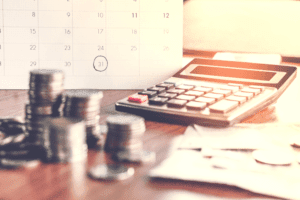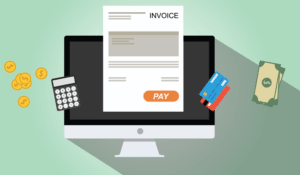
So to find the accumulated depreciation AD, we need to sum the total depreciation expense from each year. Other times, accumulated depreciation may be shown separately for each class of assets, such as furniture, equipment, vehicles, and buildings. For every asset you have in use, there is the “original basis” (how much it initially cost) and then there’s the “accumulated depreciation” (essentially, how much value it has lost, which is now considered an expense on your books).
Is accumulated depreciation a debit or credit?
Additionally, if you are interested in learning what revenue is and how to calculate it, visit our revenue calculator. Understanding the statement of retained earnings can help you evaluate your business’s profitability and help you plan for future growth. Upgrading to a paid membership gives you access to our extensive collection of plug-and-play Templates designed to power your performance—as well as CFI’s full course catalog and accredited Certification Programs.

How to calculate the accumulated depreciation
Thus, accumulated depreciation is an aggregation of individual depreciation expenses over time. By separately stating accumulated depreciation on the balance sheet, readers of the financial statement know what the asset originally cost and how much has been written off. After the 5-year period, if the company were to sell the asset, the account would need to https://www.bookstime.com/ be zeroed out because the asset is not relevant to the company anymore. Therefore, there would be a credit to the asset account, a debit to the accumulated depreciation account, and a gain or loss depending on the fair value of the asset and the amount received. Accumulated depreciation is an important component of a business’s comprehensive financial plan.
Accumulated Depreciation vs. Accelerated Depreciation
Unlike a normal asset account, a credit to a contra-asset account increases its value while a debit decreases its value. Whenever depreciation expense is recorded for an organization, the same amount is also credited to the accumulated depreciation account, how to calculate accumulated depreciation allowing the company to show both the cost of the asset and total-to-date depreciation of the asset. Accumulate depreciation represents the total amount of the fixed asset’s cost that the company has charged to the income statement so far.
Accounting Adjustments and Changes in Estimates
We do not manage client funds or hold custody of assets, we help users connect with relevant financial advisors. Accumulated depreciation can be calculated using the straight-line method or an accelerated method. Since the salvage value is assumed to be zero, the depreciation expense is evenly split across the ten-year useful life (i.e. “spread” across the useful life assumption). Starting from the gross property and equity value, the accumulated depreciation value is deducted to arrive at the net property and equipment value for the fiscal years ending 2020 and 2021.
Is Accumulated Depreciation a Current Liability?
In years two and three, the car continues to be useful and generates revenue for the company. Capitalizing this item reflects the initial expense as depreciation over the asset’s useful life. In this way, this expense is reflected in smaller portions throughout the useful life of the car and weighed against the revenue it generates in each accounting period.
- We capitalize such assets to match the expense of the asset to the total period it proves economically beneficial to the company.
- When the fixed assets are sold or disposed of, the accumulated depreciation of the fixed assets that are sold or disposed of will need to be removed as well from the balance sheet together with the fixed assets themselves.
- The accumulated depreciation account will have a credit balance, which is opposite to the normal debit balance of asset accounts.
- Once purchased, PP&E is a non-current asset expected to deliver positive benefits for more than one year.
- Showing contra accounts such as accumulated depreciation on the balance sheets gives the users of financial statements more information about the company.
- The company’s policy in fixed asset management is to depreciate the equipment using the straight-line depreciation method.
Annual Depreciation Expense Calculation Example
- The building is expected to be useful for 20 years, with a value of $10,000 at the end of the 20th year.
- In order to calculate the depreciation expense, which will reduce the PP&E’s carrying value each year, the useful life and salvage value assumptions are necessary.
- We do not manage client funds or hold custody of assets, we help users connect with relevant financial advisors.
- On the balance sheet, the carrying value of the net PP&E equals the gross PP&E value minus accumulated depreciation – the sum of all depreciation expenses since the purchase date – which is $50 million.
- Instead, the balance sheet might say “Property, plant, and equipment – net,” and show the book value of the company’s assets, net of accumulated depreciation.
- Therefore, the accumulated depreciation reduces the fixed asset (PP&E) balance recorded on the balance sheet.
Once purchased, PP&E is a non-current asset expected to deliver positive benefits for more than one year. Rather than recognizing the entire cost of the asset upon purchase, the fixed asset is incrementally reduced through depreciation expense each period for the duration of the asset’s useful life. The company can calculate the accumulated depreciation with the formula of depreciation expense plus the depreciated amount of fixed asset that the company have made so far. The accumulated depreciation account will have a credit balance, which is opposite to the normal debit balance of asset accounts.
Each period in which the depreciation expense is recorded, the carrying value of the fixed asset, i.e. the property, plant and equipment (PP&E) line item on the balance sheet, is gradually reduced. On most balance sheets, accumulated depreciation appears as a credit balance just under fixed assets. In some financial statements, the balance sheet may just show one line for accumulated depreciation on all assets.
Methods to Calculate Accumulated Depreciation

With the declining balance method, depreciation is recorded as a percentage of the asset’s current book value. Because the same percentage is used every year while the current book value decreases, the amount of depreciation decreases each year. Even though the total accumulated depreciation will increase, the amount of accumulated depreciation per year will decrease. When you record depreciation on a tangible asset, you debit depreciation expense and credit accumulated depreciation for the same amount. This shows the asset’s net book value on the balance sheet and allows you to see how much of an asset has been written off and get an idea of its remaining useful life.
Accumulated depreciation is not a current asset, as current assets aren’t depreciated because they aren’t expected to last longer than one year. Accumulated depreciation is the total amount of depreciation expense that has been allocated to an asset since it was put in use. Get instant access to video lessons taught by experienced investment bankers.
